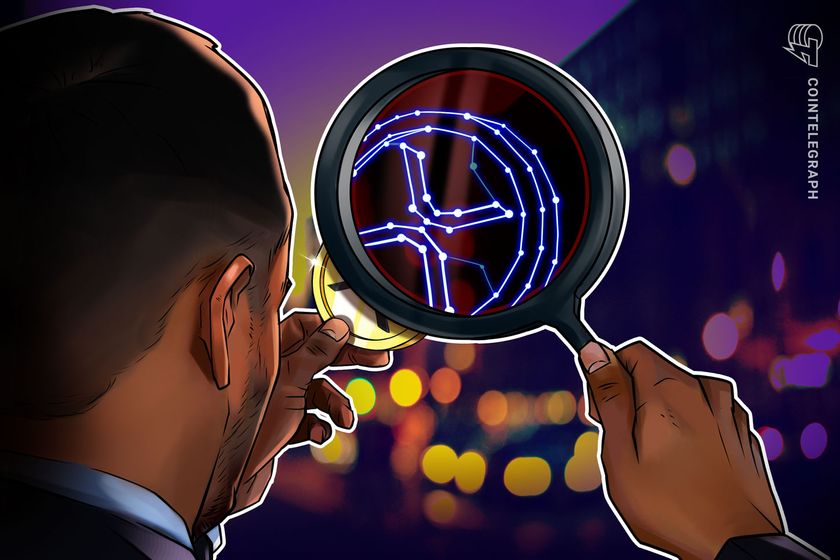In a striking moment for the cryptocurrency landscape, Ripple’s XRP has received national attention, especially after being highlighted by former President Donald Trump as a “valuable cryptocurrency” alongside giants like Bitcoin (BTC), Ethereum (ETH), Solana (SOL), and Cardano (ADA). This recognition follows an executive order from March 6, which sought to establish a strategic “Digital Asset Stockpile” managed by the U.S. Treasury. As discussions about the value and role of XRP intensify, the broader crypto community finds itself divided on the token’s true significance.
Launched in 2012 by Ripple Labs, XRP was designed primarily as a digital asset for interbank settlements, simplifying cross-border transactions. Ripple’s suite of services—including xRapid, xCurrent, and xVia—rebranded under the RippleNet ecosystem, facilitates financial institutions in enhancing transaction efficiency. Notably, only the On-Demand Liquidity service incorporates XRP, allowing for global money transfers without necessitating bank holdings of the token. Major banks, like American Express and Santander, have embraced Ripple’s technology, while data surrounding the adoption of XRP through On-Demand Liquidity remains more obscure.
XRP also plays a role in the burgeoning Web3 sector, providing basic functionality akin to gas tokens; however, it does so with limitations. Unlike Ethereum, XRP does not support complex smart contracts or decentralized applications (DApps), contributing to a smaller presence in the DeFi ecosystem. With approximately million in total value locked according to DefiLlama, XRP’s place in Web3 stands in stark contrast to more developed smart contract platforms.
“We live in a multichain world, and I’ve advocated for a level-playing field instead of one token versus another,” said Ripple Labs CEO Brad Garlinghouse, emphasizing the need for balanced representation in any government digital asset reserve.
Despite this push for inclusivity, questions about XRP’s intrinsic value linger, with critics voicing concerns regarding its centralized nature. Unlike Bitcoin’s decentralized model, XRP’s reliance on a Unique Node List for transaction validation raises issues surrounding censorship and security risks. Prominent voices within the crypto community have likened XRP’s existence to that of a banking tool rather than a true cryptocurrency, fueling ongoing debates about its legitimacy and potential. The discussion continues as analysts observe how the evolving regulations and market dynamics will shape XRP’s future within the cryptocurrency ecosystem.
Ripple’s XRP: A Strategic Cryptocurrency?
Ripple’s XRP has garnered national attention, especially with its mention by former President Trump. Below are the key points regarding XRP’s role and implications in the cryptocurrency space:
- National Recognition:
- Trump acknowledged XRP as part of the U.S. strategic crypto reserve.
- This recognition may influence public perception and adoption of XRP.
- XRP’s Utility in Banking:
- Launched in 2012 by Ripple Labs, XRP is designed for interbank settlements.
- Utilizes three main services:
- xCurrent for real-time messaging and settlement.
- xVia as a payment interface for financial institutions.
- xRapid (now On-Demand Liquidity) for facilitating cross-border transactions.
- Only On-Demand Liquidity necessitates holding XRP, impacting its price dynamics.
- Supports major banks like American Express and Bank of America but lacks extensive data on XRP-specific users.
- XRP in the Web3 Ecosystem:
- Used as a gas token but has minimal functionality compared to Ethereum.
- Does not support complex smart contracts or DApps, limiting its utility in the Web3 space.
- XRPL’s DeFi sector is significantly smaller with only million in total value locked (TVL).
- Strategic Reserve Controversy:
- Debate among experts over XRP’s role in a government asset reserve.
- Brad Garlinghouse advocates for equal treatment among cryptocurrencies, highlighting XRP’s banking focus.
- Concerns raised about XRP being more of a banking tool than a decentralized currency.
- Centralization Concerns:
- XRP’s consensus mechanism differs significantly from Bitcoin and Ethereum, relying on a Unique Node List.
- Centralization raises questions about censorship, corruption, and market manipulation risks.
- Ripple Labs holds 55% of pre-mined XRP, risking long-term stability of the asset.
“Ripple explicitly wants to power CBDCs. They have always been focused on servicing banks.” – Jameson Lopp
Ripple’s XRP Gains Spotlight Amid Controversies
In recent developments, Ripple’s XRP has catapulted into the limelight, especially after its mention by former President Donald Trump as a vital component of a proposed US strategic cryptocurrency reserve. This recognition has ignited debates within the crypto community, splitting opinions on XRP’s true value and utility compared to its prominent peers like Bitcoin and Ethereum. While XRP supports banking transactions primarily through RippleNet, its actual influence in driving XRP’s market price remains ambiguous—highlighting a significant downfall compared to more decentralized and widely-adopted cryptocurrencies.
One of the competitive advantages of XRP is its backing by major financial institutions. With banks like American Express and Bank of America adopting Ripple’s enterprise solutions, XRP’s potential for real-world application in cross-border transactions cannot be dismissed. However, a substantial disadvantage is that most of these institutions utilize Ripple’s services without needing to hold XRP, which limits the token’s demand and could hinder its appreciation in value.
Moreover, XRP’s role in the burgeoning world of Web3 is notably restrained. Compared to Ethereum and Solana, which have robust DeFi ecosystems, XRP’s Web3 capability is limited largely to basic functionality, presenting a challenge in appealing to developers looking for a versatile platform. The scarcity of advanced smart contracts and the small Web3 sector on the XRP Ledger signals that it might lag behind its competitors, potentially alienating tech-savvy investors who favor innovation.
The division within the cryptocurrency community is palpable, as some consider XRP’s centralized nature and corporate ties problematic. Critics, including Bitcoin advocates, argue that XRP’s permissioned model contrasts sharply with the decentralized ethos that cryptocurrencies were originally built upon. This creates an identity crisis for XRP, as it is often branded more as a banking instrument rather than a true independent cryptocurrency. Consequently, while Ripple’s strategic partnerships could foster institutional confidence and adoption, they might simultaneously deter purists and decentralized finance enthusiasts, impacting XRP’s ability to gain traction.
Investors and stakeholders in the traditional finance sector could benefit from XRP’s capabilities in streamlining payment solutions and remittances. However, for those rooted in the original decentralized ideals of cryptocurrency, XRP’s corporate affiliations and centralized control might pose significant concerns and challenges, potentially leading to skepticism about its legitimacy as a viable alternative to Bitcoin or Ethereum. The ongoing debates about its inclusion in national reserves reflect broader questions about what role cryptocurrencies should serve—another hurdle XRP must surmount to gain universal acceptance.

















